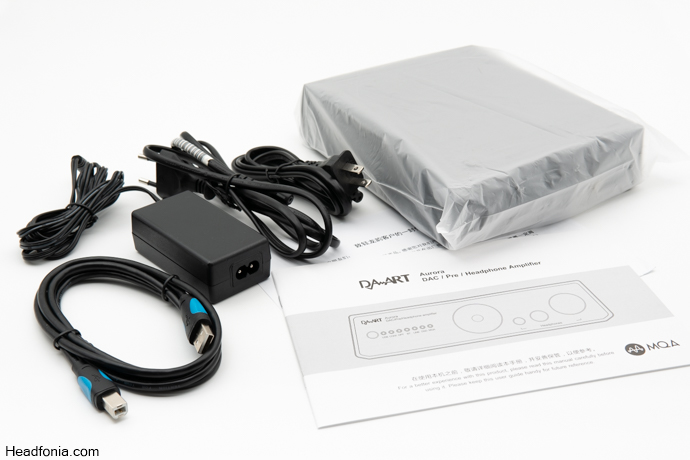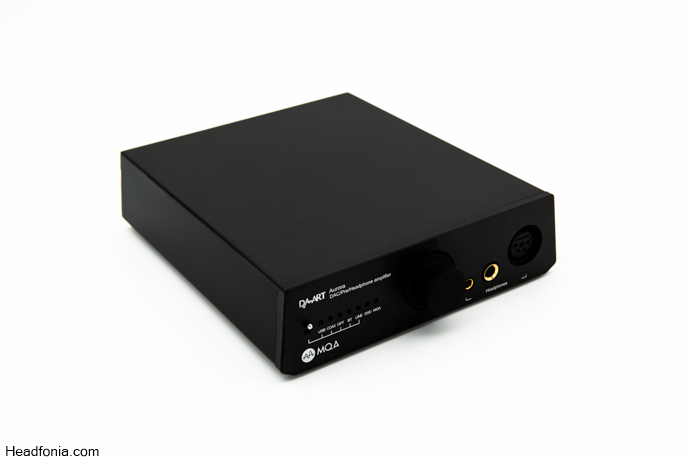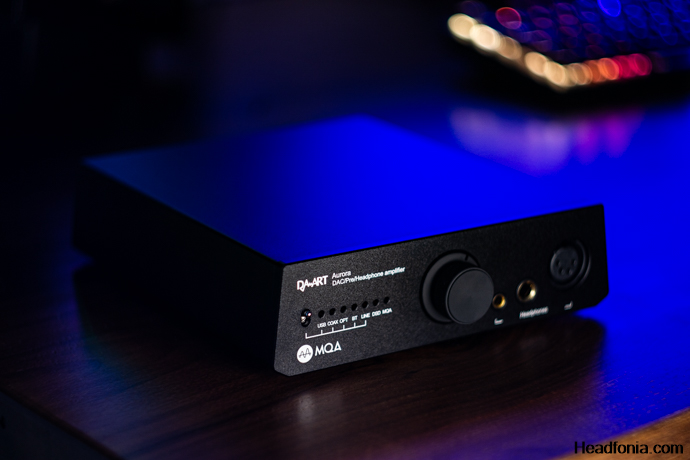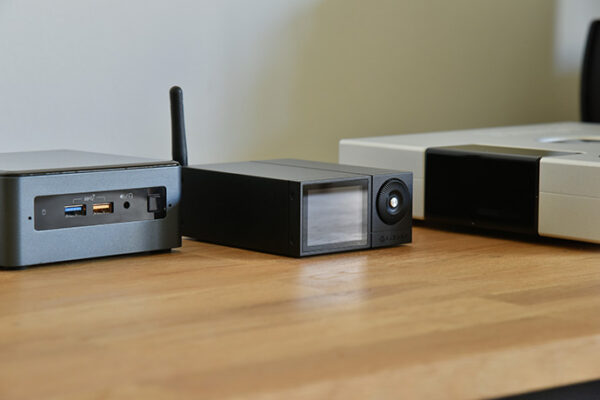In this article, we review the new Yulong DA-ART Aurora DAC, PRE & Headphone AMP. It costs $520 USD.
Disclaimer: Yulong sent us the DA-ART AURORA via ShenzhenAudio for this review, free of charge. We thank them for this opportunity. As always, I am here to honestly convey my thoughts about the product to you.
YULONG
Yulong is an audio company founded in 2009 in Shenzhen, China. In addition to being active in the industry for a long time, they are known for designing high-performance all-in-one devices such as DACs & AMPs.
Yulong states that they combine the latest technologies, meticulous engineering principles, and excellent craftsmanship in their R&D to provide solid performing products to their customers around the world.
My first experience with Yulong dates back to 2014. Yulong’s D200 was just released and there weren’t many alternatives around. I remember it having a pretty good sound quality for its time. It’s really great to see Yulong, one of the big former players in the industry, making a rapid re-entry into the already competitive DAC and AMP market.
Yulong’s new sub-brand, new line-up, the DA-ART series consists of 3 products as of the time of this writing. The Canary II, the Aurora, and finally the Aquila II. You can check here for price & information.
Yulong DA-ART Aurora Desktop DAC & AMP
Aurora’s dedicated web page can be found here. The Aurora is a high-performance DAC & AMP all-in-once solution that can decode PCM up to 24bit-768kHz and DSD up to DSD512, natively via XMOS XU216 USB Controller. The Aurora is powered by ESS Technology’s widely used, premium-tier chip, the ES9068AS.
The amplification stage consists of 7 pieces of critically acclaimed OPA1612. The Aurora features a class A amp, which is the main selling point of this device, in my opinion. Additionally, the device has rich I/O options, which we will explore very soon. Let me include a list of the features here, first.
- ESS Technology ES9068AS DAC
- CLASS A Balanced Amp Architecture with x7 OPA1612
- XMOS XU216 2nd Gen USB Controller | 8x MQA Capable
- Rich I/O + DAC / PRE / HPA modes
- BAL 4W @32Ω – UNBAL 1.6W @32Ω

Packaging & Accessories
The Aurora comes in an aesthetically pleasing, black cardboard box. The box is quite large and the device is securely stored in a foam compartment to avoid damage during transport.
The box design is nice, the DA-ART logo is located on the front and back of the box in the lower right corners. There is also a picture of the device and its features on the box. The back and front sides of the box are completely identical.
As for the accessories, the Aurora comes with a good quality USB-A to USB-B cable, an external PSU, and power cables for the external PSU. You also get a user’s manual in English and Chinese.

Design & Build Quality
The Aurora is available in three colors. Silver, red and black. The DAC features a CNC milled chassis and it looks elegant. The anodized metallic black finish looks very good up close and offers scratch resistance. The build quality seems really good, I couldn’t find any CNC or assembly issues with my unit. The sockets are tight, the rear I/O feels durable and rigid.
The shape of Aurora’s chassis resembles a triangle cut off at the top and bottom. The lower part of the Aurora is wider than the upper part, and this shape has managed to add a different design vibe to the device. I found its design quite simple and elegant.
From my experience with Yulong products, they usually have sharper design lines and a more industrial look. This new form factor of Aurora is a pretty nice improvement in terms of modernness and elegancy.
Moving on to the layout, Yulong placed the headphone outputs on the front side. The device comes with balanced capability and features 4.4mm HPO, 4-pin XLR out for your bigger cans and 6.35mm SE HPO for wide compatibility. The Aurora’s volume knob is located in the middle of the front faceplate. The volume knob turns smoothly, there are no steps, and feels accurate. Note that the volume knob is not a multi-function button and can’t be pressed.
There are a bunch of status LEDs on the left side of the volume knob and these LEDs help you see the device’s active output modes as well as active input modes. Located on the far left of the front faceplate, there is a lever-style switch to control the active input type.
On the rear side of the device, we have plenty of I/O options to choose. From left to right, we see a DAC/PRE AMP lever switch, balanced XLR outputs, unbalanced RCA line in and RCA outputs, a coax input, an optical input, a USB-B input, and a 5V barrel power socket. There is also an ON/OFF switch on the far right side of the rear panel that is somewhat hard to reach.
Additionally, on my unit, the Bluetooth antenna socket is covered with a sticker but I can feel the CNC cut by touching it. If you’ve noticed, there is a BT led on the front, however, Aurora units shipped outside of China do not come with a BT module due to regulatory requirements. Yulong states that they will only apply for a BT license in countries where there is a local dealer who can participate in the licensing process.
If you ask me, the necessary changes should have been made and the BT text on the front should have been removed. It’s not very nice to have a non-existent feature written on the front panel.
Apart from these ticky tackies, the Aurora has a solid build, a great design, and good material quality.

Power
The Aurora packs a serious punch with its Class A amplifier design. It has enough juice to power any full-size can on the market. The Aurora can dish out 4 whopping watts into a 32Ω load, with ease. That roughly equals 375mw into a 300Ω load.
Of course, these are the numbers for the balanced HPOs. My Sennheisers max out around %20 volume, which means it is more powerful than anything I’ve reviewed this year. There is no clipping or audible distortion either, the amp and the preamp of this device are certainly impressive and I think it is one of the main selling factors of this device.
As for the single-ended, the Aurora can dish out 1.6W into a 32Ω load and 180mW into a 300Ω load. It also has a nice timbre that we will be talking about in the next chapter. Yulong certainly did nail the amplifier stage on this device.
There aren’t many alternatives, especially when it comes to raw power output. DAC/PRE modes can reach up to 16 Vrms max and that is just madness for a device of this form and factor. Great job, Yulong.
Apart from these numbers, I’ve hit a couple of bumps during my listening tests. If you have sensitive, multi-BA monitors, like the Yanyin Canon, (only 10Ω), using the balanced output of the Aurora is a bit hard due to the excessive power it has. The Canon in-ear monitors max out at around %5 volume and if you accidentally bump into the volume wheel, you run the risk of having a damaged earphone.
The output impedance is another point of curiosity for me as there is no information on this subject found anywhere on the website or in the manual. Yulong could have improved compatibility with sensitive in-ear monitors by adding a gain setting to the device.
The review continues on Page Two, after the click HERE or by using the jump below.
Page 2: Sound, Signature, Low, Mid, High, Technical Capability, Comparisons, Last Words









